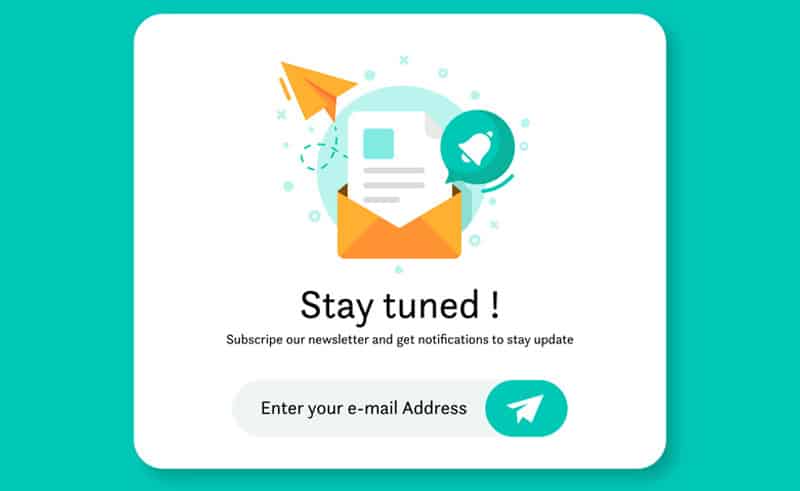Engagement is a term that is thrown around quite loosely these days when it comes to social media KPIs. But then brands fail to question what engagement metric is truly of value to the brand.
If someone just likes your page, is that of value?
If someone likes a post or leaves a comment like ‘Nice’ or ‘Good’ or the dreaded ‘Hi’, does it help the brand?
Or will you want the user to share your content with his friends and followers?
Can that make a difference?
Before we discuss ways to make content engaging, let us analyze what engagement is of value to you. If you or your brand owns a blog, what metrics help you decide whether your users are engaging with you? Here are the top 6 metrics that leading brands measure
- Time spent on the blog
- No. Of users sharing the blog on social media
- Valid comments on the blog
- Clicks on call to action links in the blog
- Giving a backlink to your blog
- Bounce rate
Each of these metrics relates to engagement. But all of them are of different value. For example, we would rate shares on social and backlinks to be the top two metrics that prove that the blog has nudged an action from your reader to endorse your brand/view.
On the other hand, a click on the CTA which drives users to buy your product (in case of an e-commerce site) or fill a lead form (especially for B2B sites) is the most valuable action your user can take.
Time spent on the blog and bounce rates are general measures to keep a check on if the users are finding your content useful and whether the title and the content are in sync with the user’s expectation.
Did you wonder why we did not set ‘views’ as a metric here on how many people read the blog? That’s because that is a KPI for the content you put out in marketing the blog. It does relate as a KPI for the title of your blog but that’s where it ends.
Another metric that can stem out of your content and is a great one to measure is how many people subscribe to your newsletter after reading your content. They like it and want more of it. They are a niche audience, perfect for lead nurture and will eventually come handy when you have something to promote.
The first thing you need to figure out is what engagement metrics count for you. It will be great to eyeball them all every month as a standard practice. Now, let’s get down to best practices that can drive each engagement metric.
1. Improve Social share engagement for your content

Depending on the type of your content, the first thing is to know where it is likely to be shared socially. The simplest thing to do is install a plugin that pushes social shares to the forefront. Some show the number of times the post has been shared by others, which promotes mirror behavior. Others have the social share buttons on the top, bottom, and side scroll of the page so that it is readily available. There are other plugins that allow your text selection on the page to be converted into a tweet tagging the brand handle. Others paraphrase important sentences from the content into tweet bits to make it a no-brainer to think about what and how to share. Last but not least, a line below the content requesting share doesn’t do any harm. You can experiment and evaluate to see which tool works for your audience. Keep it simple and that should be it.
2. Get backlinks for your content

Backlinks used to be the secret weapon in the SEO arsenal. It’s now much harder than it looks. You have to be the most authoritative content provider on a topic to get a good few backlinks for it. You may have to go the old-school way of asking people to link to your site too.
There are some common types of content that get the endorsement. They are great listicles, good content that people can’t easily re-write or copy because you have indisputable research behind it. It can even be one that is high on humor. Such content gives the endorser some value to link to.
Backlink.io’s crazy article about 200+ SEO factors considered by Google is a great example of this. It is not something that you can just get up one day and write. It requires in-depth research, industry knowledge and more than a few days of time commitment. (See how he just got one more backlink!)
3. Add an easy call to actions
 What do you want your readers to do when they are reading your blog or right after. The attention span is too short and you need to get them to do something quickly. If you are a local business, you want them to call or visit you. Display your contact number prominently and add a map to your location. You can give a first visit incentive (BOGO offer) or even a discount to pique their interest.
What do you want your readers to do when they are reading your blog or right after. The attention span is too short and you need to get them to do something quickly. If you are a local business, you want them to call or visit you. Display your contact number prominently and add a map to your location. You can give a first visit incentive (BOGO offer) or even a discount to pique their interest.
If you are a B2B site, putting out a white paper, eBook or research with industry data is one of the sure shot ways to attract a prospect lead’s attention. They are more than willing to share their email id to get free access to valuable information that helps with decision making for their business. Another great example is how travel sites do it – create amazing wanderlust articles and then subtly push in a package option.
If you are a B2C e-commerce site, doing listicles and product comparisons is a great way to subtly sell to your customers. Don’t forget to add a UTM code to your links to know which link is driving the most leads/conversions.
4. Add comments on the blog

Though commenting is a feature that gets counted as engagement, how can you as a brand seek value out of it?
There are multiple ways to look at it. Comments are given mostly by highly engaged readers who’ve read the whole blog and have a point of view to share. You can look at connecting and engaging with such users and create them as a base with which you can do your campaign experiments.
The other option to engage with comments is asking users for feedback or asking them to comment if they want to get more information.
5. Time spent on the blog
This is generally considered as a ‘fluff’ metric. It is a metric that many tend to holler about when the other KPIs aren’t working. Average time spent is a great KPI to have. It shows how ‘engaged’ your users are with your content. But it is like a half metric unless you connect the time spent with an action metric. Check if these are directly proportional to estimate if this metric is providing value to you in the long run.
Buzzfeed, Schoopwhoop and the likes have great ways to get people interested in long listicles like “31 out of the ordinary gifts that you can give your father this Father’s Day”. In addition to this, use plugins to show the top 5 or latest posts featured to keep the interest going.
6. Bounce rate
 Many people still don’t fully understand what bounce rate is. Bounce rate is when a user comes to the landing page and leaves without visiting any other page on your website.
Many people still don’t fully understand what bounce rate is. Bounce rate is when a user comes to the landing page and leaves without visiting any other page on your website.
The key to bringing down the bounce rate not is just about improving the quality of content. It ensures there is one irresistible offer or form that the user feels compelled and easy to fill.
Ensure you create at least one ‘intrigue’ piece in a blog page and then check to see how this improves over time.
7. Content Subscription

Subscribing to receive content is one of the best ways to create a base to pull your audience back every now and then. In most cases, when people give out their email ids or phone numbers, they click the T&C checkbox without reading the terms. These terms generally include terms around receiving communication from the brand.
Once your reader is on your blog for more than a minute, you can initiate a time-bound pop-up that asks people to subscribe. The easier way is to create a targeted contest, polls or quizzes where people have to give their email ids to participate. Last but not the least, archive your previous newsletters to showcase that you consistently add value to your customers, which makes it likely that they will subscribe.
Do keep in mind that emails are not the most preferred means of communication these days with promotional folders and spam catchers. Look for other innovative ways like notifications through Whatsapp, which has an average 50%+ chance of getting read. This product, though, is in an early adoption stage and you will have some wait time before you can start with it.
8. Increase views

Views aren’t generally an effective metric unless you connect it with two additional factors – brand awareness and brand affinity. Both of these are difficult to measure unless you enlist third-party services to do some research. You may post a lot of brand content on social but has it helped?
Maybe an online survey with a random slice of your customers active on the social channel will probably be one way to measure the impact of views. The same set of users can be asked additional questions on whether they’ve understood the brand’s value proposition which can also be an outcome of brand affinity.
Conclusion
Analyzing the impact of content on your business isn’t a difficult thing to do. And yet, it gets done so frugally, that you wonder about the merits of the system. Well, now you know.
Need a helping hand with the content marketing services? Connect with us.
Watch: Imagine the possibilities: Content Marketing





